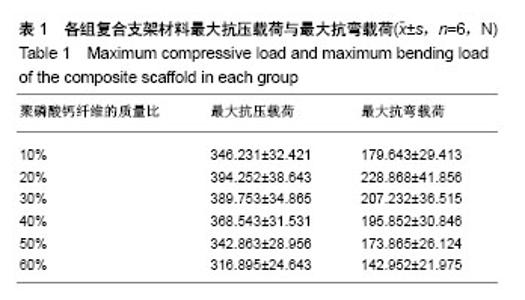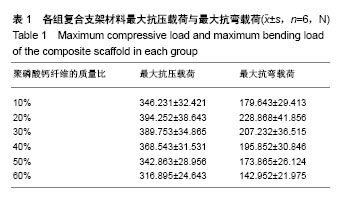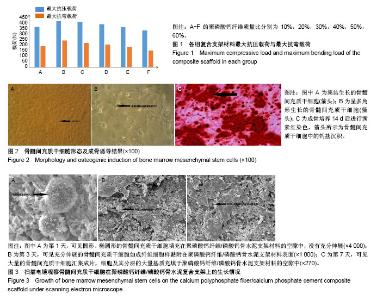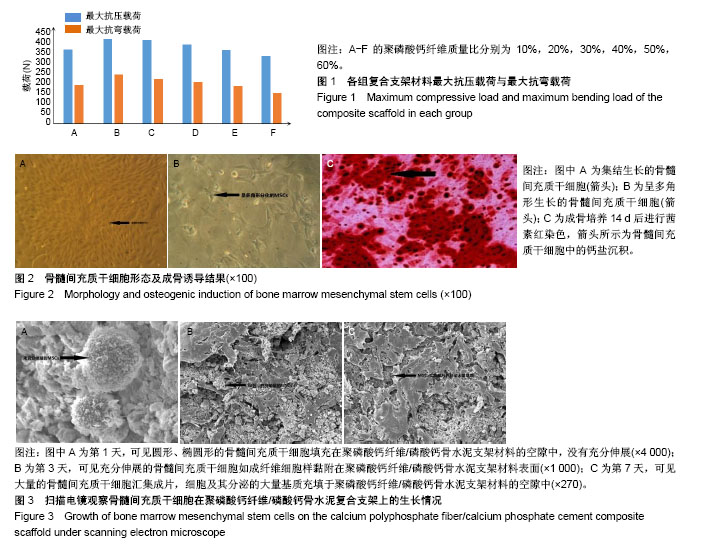| [1] Wang P, Zhao L, Chen W, et al. Stem Cells and Calcium Phosphate Cement Scaffolds for Bone Regeneration. J Dent Res. 2014;93(7): 618-625. [2] Brown WE, Chow LC. A new calcium setting cement. J Dent Res. 1983;63:762-765. [3] Janicki P, Boeuf S, Steck E, et al. Prediction of in vivo bone forming potency of bone marrow-derived human mesenchymal stem cells. Eur Cell Mater. 2011;21:488-507. [4] Kagami H, Agata H, Tojo A. Bone marrow stromal cells (bone marrow-derived multipotent mesenchymal stromal cells) for bone tissue engineering: basic science to clinical translation. Int J Biochem Cell Biol. 2011;43(3):286-289. [5] Sommeling CE, Heyneman A, Hoeksema H, et al. The use of platelet-rich plasma in plastic surgery: a systematic review. J Plast Reconstr Aesthet Surg. 2013;66(3):301-311. [6] Namazi H. Enhancing bone healing during distraction osteogenesis with platelet-rich plasma: a novel molecular mechanism. Injury. 2012;43(7):1225-1226. [7] Latalski M, Elbatrawy YA, Thabet AM, et al. Enhancing bone healing during distraction osteogenesis with platelet-rich plasma. Injury. 2011;42(8):821-824. [8] Kanthan SR, Kavitha G, Addi S, et al. Platelet-rich plasma (PRP) enhances bone healing in non-united critical-sized defects: a preliminary study involving rabbit models. Injury. 2011;42(8):782-789. [9] St-Pierre JP, Gan L, Wang J, et al. The incorporation of a zone of calcified cartilage improves the interfacial shear strength between in vitro-formed cartilage and the underlying substrate. Acta Biomater. 2012;8(4):1603-1615. [10] St-Pierre JP, Pilliar RM, Grynpas MD, et al. Calcification of cartilage formed in vitro on calcium polyphosphate bone substitutes is regulated by inorganic polyphosphate. Acta Biomater. 2010;6(8):3302-3309. [11] Waldman SD, Grynpas MD, Pilliar RM, et al. Characterization of cartilagenous tissue formed on calcium polyphosphate substrates in vitro. J Biomed Mater Res. 2002;62(3):323-330. [12] Jones JR, Ahir S, Hench LL. Large-scale production of 3D bioactive glass macroporous. Sol-Gel Sci Technol. 2004;29:179-188. [13] 周磊,闫景龙,胡春杰.聚磷酸钙纤维/磷酸钙骨水泥复合材料修复骨缺损的实验研究[J].中国脊柱脊髓杂志,2006,16(11):851-855.[14] 周磊,闫景龙,胡春杰.聚磷酸钙纤维/磷酸钙骨水泥/微小颗粒骨修复骨缺损的实验研究[J].中国骨与关节损伤杂志, 2007,22(12):1002-1005.[15] 周磊,闫景龙,胡春杰.聚磷酸钙纤维/磷酸钙骨水泥/微小颗粒骨复合人工骨的体外降解[J].中国组织工程研究与临床康复, 2007,11(1):33-36.[16] Wei J, Li YB. Tissue engineering scaffold material of nano-apatite crystals and polyamide composite. Eur Polymer J. 2004;40(3): 509-515. [17] Granero-Molto F, Weis JA, Longobardi L, et al. Role of mesenchymal stem cells in regenerative medicine: application to bone and cartilage repair. Expert Opin Biol Ther. 2008;8(3):255-268. [18] Kang SW, Lee JS, Park MS, et al. Enhancement of in vivo bone regeneration efficacy of human mesenchymal stem cells. J Microbiol Biotechnol. 2008;18(5):975-982. [19] Matsushima A, Kotobuki N, Tadokoro M, et al. In vivo osteogenic capability of human mesenchymal cells cultured on hydroxyapatite and on beta-tricalcium phosphate. Artif Organs. 2009;33(6):474-481. [20] 黄粹业.骨缺损的临床修复与研究进展[J].右江民族医学院学报, 2002, 24(3):427-429.[21] Larsen KH, Frederiksen CM, Burns JS, et al. Identifying a molecular phenotype for bone marrow stromal cells with in vivo bone-forming capacity. J Bone Miner Res. 2010;25(4):796-808. [22] Shahdadfar A, Frønsdal K, Haug T, et al. In vitro expansion of human mesenchymal stem cells: choice of serum is a determinant of cell proliferation, differentiation, gene expression, and transcriptome stability. Stem Cells. 2005;23(9):1357-1366. [23] 张铭杰,张庆文,何伟,等.成人骨髓间充质干细胞体外培养、鉴定与成骨诱导[J].中国组织工程研究,2013,17(45):7947-7953.[24] Chen L, Tredget EE, Wu PY, et al. Paracrine factors of mesenchymal stem cells recruit macrophages and endothelial lineage cells and enhance wound healing. PLoS One. 2008;3(4):e1886. [25] Arinzeh TL, Peter SJ, Archambault MP, et al. Allogeneic mesenchymal stem cells regenerate bone in a critical-sized canine segmental defect. J Bone Joint Surg Am. 2003;85-A(10):1927-1935. [26] Mendes SC, Tibbe JM, Veenhof M, et al. Relation between in vitro and in vivo osteogenic potential of cultured human bone marrow stromal cells. J Mater Sci Mater Med. 2004;15(10):1123-1128. [27] Stolzing A, Jones E, McGonagle D, et al. Age-related changes in human bone marrow-derived mesenchymal stem cells: consequences for cell therapies. Mech Ageing Dev. 2008;129(3):163-173. [28] 周常艳,周庆焕,边竞,等.骨髓间充质干细胞与磷酸钙骨水泥复合物修复兔关节软骨缺损[J].中国组织工程研究, 2015,19(8):1195-1199.[29] Winet H, Hollinger JO, Stevanovic M. Incorporation of polylactide-polyglycolide in a cortical defect: neoangiogenesis and blood supply in a bone chamber. J Orthop Res. 1995;13(5):679-689. [30] Thomas KA. Vascular endothelial growth factor, a potent and selective angiogenic agent. J Biol Chem. 1996;271(2):603-606. [31] 杨显声,阎景龙,麻松.自体颗粒骨磷酸钙骨水泥复合细胞移植的实验研究[J].中国骨质疏松杂志,2005,11(2):225-229. |



